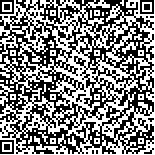| 摘要: |
| 于1993年11月 - 1994年2月,用高压氦气式基因枪,将PB1221质粒[装有CaMV 35S启动子、GUS(β-葡精苷酸酶)基因以及nos的3’调控区]导入海带和裙带菜组织切块中。48h后,在海带假根细胞和裙带菜中肋部叶片细胞中检测到GUS基因的表达。实验表明,微粒子轰击法是外源基因导入大型褐藻的一个有效途径。CaMV 35S启动子能够驱动外源基因在海洋藻类中的表达,可作为藻类基因工程的启动元件。 |
| 关键词: 褐藻 基因导入 基因瞬间表达 微弹轰击 CaMV 35S 启动子 GUS基因 |
| DOI: |
| 分类号: |
| 基金项目:中国科学院海洋研究所调查研究报告第2336号。国家科委、山东省科委攻关合同项目 |
|
| TRANSIENT EXPRESSION OF GUS GENE IN PHAEOPHYTES USING BIOLISTIC PARTICLE DELIVERY SYSTEM |
|
Qin Song1, Zhang Jian2, Li Wenbin2, Wang Xihua1, Tong Shun1, Sun Yongru2, Zeng Cbengkui (C. K. Tseng)1
|
|
1.Institute of Oceanology, Academia Sinica, Qingdao 266071;2.Institute of Genetics, Academia Sinica, Beijing 100101
|
| Abstract: |
| Much progress has been made in recent years in transformation of blue-green algae and unicellular green algae. Both nuclear and chloroplast transformation have been achieved in Chlamydomonas. Only a little progress has been made in gene transfer of eukaryotic macroalgae, the seaweeds. Lack of an indirect transformation system, such as Agrobacterium system, made the establishment of direct methods very important. We have little knowledge about promoters in seaweeds. Also, CaMV 35S and SV40 have been successfully used in transformation of unicellular green algae. Levy (1991) reported preliminary trials of biolistics with Gracilaria but the results were negative. This paper reports study on transient expression of GUS gene in Laminaria japonica and Undaria pinnatifida using high velocity microprojectiles and CaMV35S as a useful promoter for seaweed transformation, and suggests an applicable transformation mechanism capable of solving the regeneration problems of brown algal protoplasts.
The materials used were healthy young sporophytes of L. japonica and U. pinnatifida collected from Qingdao. The middle parts of the blade and the rhizoids of L. japonica were cut into 1 × l cm2 and 1 × 0.3 cm2 pieces separately. The blade and the rhizoids of U. pinnatifida were cut the same way except that the coastae were cut as new material (1 × 0.3 cm2, or l cm long and 0.8 cm diameter). A Biolistic PDS-1000/He Particle Delivery System (Bio-Rad Company, U.S.A.) was used to deliver DNA into intact algal cells. Gold microprojectiles were coated with plasmid pBI221 (CaMV35S promoter-GUS gene-nos ter). Control tissues were bombarded with gold microprojectiles without DNA. After two days' culture in MS medium, tissues were stained for histochemical assay. Negative results were obtained for GUS activity in all control tissues. No GUS background reaction was found inside brown algal cells (Plate I:1, I:2) and blue spots were found scattered inside the rhizoids of L. japonica (Plate I:3, a cut-open rhizoid) and beneath the surface of costa of U. pinnatifida (Plate I:4). These findings indicate that particle bombardment can be used to deliver DNA into many intact algal cells simultaneously and that the foreign gene introduced by this proccess can be transiently expressed using CaMV35S promoter. An appropriate selection marker can be used to select transgenic seaweeds. |
| Key words: Phaeophyte, Gene transfer, Transient gene expression, Microprojectile bombardment, CaMV35S promoter, GUS gene |
